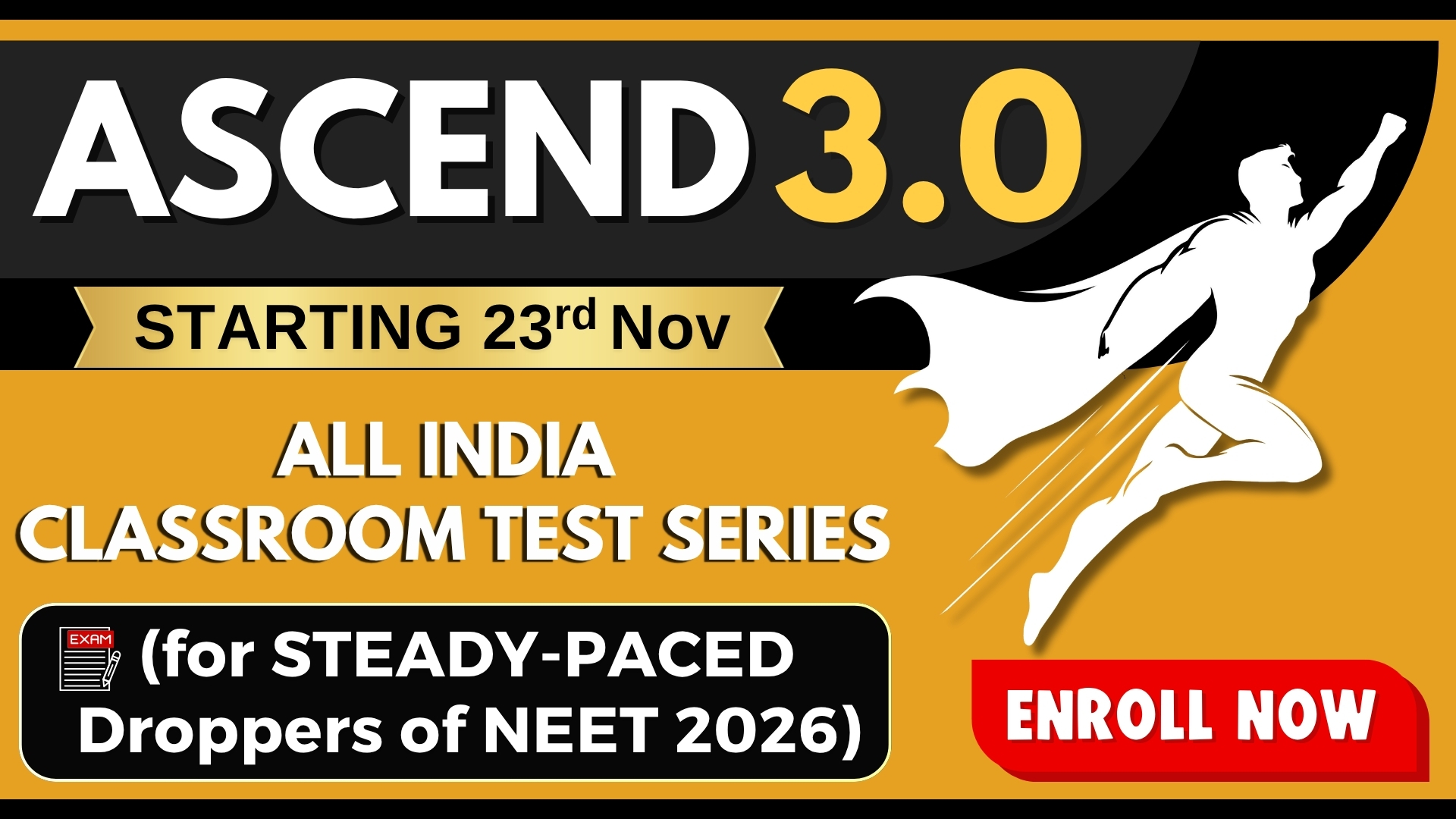Select Question Set:
Consider the given two statements:
Assertion (A):
C4 plants are more suited to hot climates than C3 plants.
Reason(R):
They do not close their stomata in hot, dry weather.
1.
(A) is True but (R) is False
2.
Both (A) and (R) are True and (R) correctly explains (A)
3.
Both (A) and (R) are True and but (R) does not correctly explain (A)
4.
(A) is False but (R) is True
Subtopic: C4 Cycle (Hatch & Slack Pathway) |
66%
Level 2: 60%+
Please attempt this question first.
Hints
Please attempt this question first.
Consider the given two statements:
| Assertion (A): | The Calvin cycle actually occurs only in the dark or during night time. |
| Reason (R): | The Calvin cycle is also called as ‘Dark’ reactions. |
| 1. | (A) is True but (R) is False |
| 2. | Both (A) and (R) are True and (R) correctly explains (A) |
| 3. | Both (A) and (R) are True and but (R) does not correctly explain (A) |
| 4. | (A) is False but (R) is True |
Subtopic: Dark Reaction : Calvin Cycle |
81%
Level 1: 80%+
Please attempt this question first.
Hints
Please attempt this question first.
Regarding ATP synthase involved in chemiosmosis in chloroplasts:
| I: | The component CF0 is embedded in the thylakoid membrane. |
| II: | The component CF1 protrudes on the outer surface of the thylakoid membrane on the side that faces the stroma. |
| 1. | Only I is correct |
| 2. | Only II is correct |
| 3. | Both I and II are correct |
| 4. | Both I and II are incorrect |
Subtopic: Chemiosmotic hypothesis |
90%
Level 1: 80%+
Please attempt this question first.
Hints
Please attempt this question first.
Consider the two given statements:
| Assertion (A): | The cyclic flow hence, results only in the synthesis of ATP, but not of NADPH + H+. |
| Reason (R): | The excited electron does not pass on to NADP+ but is cycled back to the PS I complex through the electron transport chain. |
| 1. | Both (A) and (R) are True and (R) correctly explains (A) |
| 2. | (A) is True but (R) is False |
| 3. | (A) is False but (R) is True |
| 4. | Both (A) and (R) are True but (R) does not explain (A) |
Subtopic: Light Reaction: Photophosphorylation |
87%
Level 1: 80%+
Please attempt this question first.
Hints
Please attempt this question first.
The reaction centre in PS II has an absorption maxima at:
| 1. | 780 nm | 2. | 680 nm |
| 3. | 700 nm | 4. | 660 nm |
Subtopic: Light Reactions |
90%
Level 1: 80%+
NEET - 2023
Hints
How many ATP and NADPH2 are required for the synthesis of one molecule of glucose during Calvin cycle?
| 1. | 18 ATP and 16 NADPH2 |
| 2. | 12 ATP and 12 NADPH2 |
| 3. | 18 ATP and 12 NADPH2 |
| 4. | 12 ATP and 16 NADPH2 |
Subtopic: Dark Reaction : Calvin Cycle |
89%
Level 1: 80%+
NEET - 2023
Hints
Which of the following combinations is required for chemiosmosis?
| 1. | Proton pump, electron gradient, NADP synthase. |
| 2. | Membrane, proton pump, proton gradient, ATP synthase. |
| 3. | Membrane, proton pump, proton gradient, NADP synthase |
| 4. | Proton pump, electron gradient, ATP synthase |
Subtopic: Chemiosmotic hypothesis |
80%
Level 1: 80%+
NEET - 2023
Hints
Match List-I with List-II
Choose the correct answer from the options given below:
| List-I | List-II | ||
| (A) | Chlorophyll a | (I) | Yellow to yellow orange |
| (B) | Chlorophyll b | (II) | Yellow green |
| (C) | Xanthophyll | (III) | Blue green |
| (D) | Carotenoids | (IV) | Yellow |
| Options: | (A) | (B) | (C) | (D) |
| 1. | III | II | IV | I |
| 2. | III | I | IV | II |
| 3. | II | III | I | IV |
| 4. | IV | III | II | I |
Subtopic: Pigments |
84%
Level 1: 80%+
NEET - 2023
Hints
Given below are two statements :
In the light of the above statements, choose the most appropriate answer from the options given below:
| Statement I: | RuBisCO is the most abundant enzyme in the world. |
| Statement II: | Photorespiration does not occur in C4 plants. |
| 1. | Statement I is correct but Statement II is incorrect |
| 2. | Statement I is incorrect but Statement II is correct |
| 3. | Both Statement I and Statement II are correct |
| 4. | Both Statement I and Statement II are incorrect |
Subtopic: Photorespiration |
85%
Level 1: 80%+
NEET - 2023
Hints
Which out of the following statements is incorrect?
| 1. | Grana lamellae have both PS I and PS II |
| 2. | Cyclic photophosphorylation involved both PS I and PS II |
| 3. | Both ATP and NADPH + H+ are synthesised during non-cyclic photophosphorylation |
| 4. | Stroma lamellae lack PS II and NAP reductase |
Subtopic: Light Reaction: Electron Transport |
81%
Level 1: 80%+
NEET - 2023
Hints
Select Question Set:






